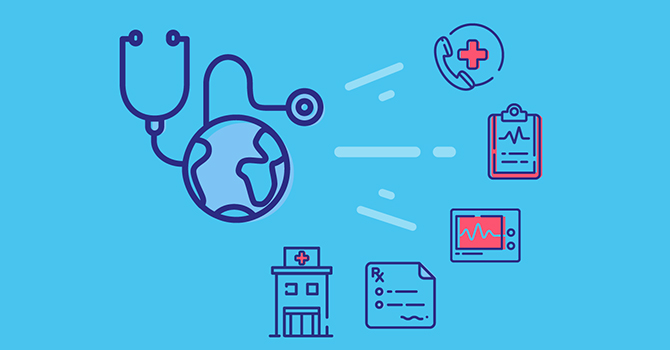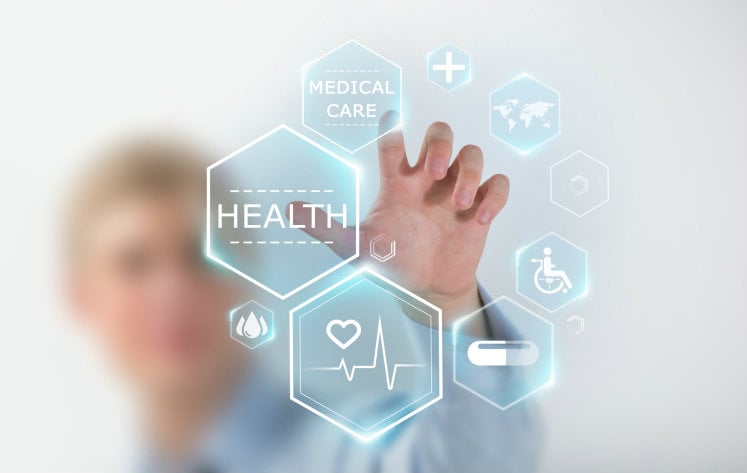Why Healthcare RCM is Vital for Financial Health And Wellness in Medical Practices
Why Healthcare RCM is Vital for Financial Health And Wellness in Medical Practices
Blog Article
A Comprehensive Guide on How Health Care RCM Works to Streamline Billing and Collections
Navigating the intricacies of healthcare income cycle management (RCM) is important for suppliers intending to improve their invoicing and collections processes. The overview unboxes the details of RCM, from individual registration to accounts receivable management, supplying insights right into enhancing each action.
Comprehending Income Cycle Monitoring
Understanding the complexities of Earnings Cycle Management (RCM) is vital for health care companies intending to optimize their monetary performance. RCM is an essential management function that includes the whole economic procedure of patient care, from the preliminary appointment setting to the last payment of the balance. It is an intricate procedure made to identify, accumulate, and manage the profits from the solutions supplied to people. Reliable RCM ensures that medical care service providers obtain timely and accurate repayments, lessening the risk of profits loss and boosting money flow.
The RCM procedure starts when a client schedules an appointment and extends via the person's care journey, consisting of payment and collections. An essential goal is to minimize the time in between receiving and offering a service repayment, therefore enhancing the organization's financial health. RCM includes various functions such as patient registration, insurance coverage verification, cost capture, coding, declares entry, repayment uploading, and taking care of allures and denials.
Key Parts of RCM
In the world of Revenue Cycle Monitoring (RCM), understanding its key elements is basic to attaining financial efficiency within medical care organizations. RCM is an extensive process that encompasses different stages, each essential to making certain efficient payment and collections. The main elements consist of client registration, insurance verification, fee capture, coding, case entry, payment posting, and balance due monitoring.


Once coded, insurance claims are sent to payers, where accuracy is vital to stay clear of delays or beings rejected - Healthcare RCM. Repayment publishing entails recording the received settlements, which allows for the reconciliation of accounts. Last but not least, balance dues monitoring concentrates on monitoring and resolving unpaid insurance claims, making certain prompt follow-up and resolution
Each part of RCM is adjoined, and ineffectiveness in any type of part can interrupt the entire cycle. As a result, grasping these aspects is important for health care suppliers to maximize income and enhance their financial wellness.
Strategies for Efficient Payment

Systematizing invoicing procedures throughout the company is one more vital approach. Developing clear guidelines for paperwork, coding, and submission aids keep consistency and compliance with governing demands. Training staff on a regular basis on these treatments makes sure everyone is current with the current modifications in billing codes and payer plans.
Accurate cost capture is vital in stopping income leakage. Applying normal audits and tracking systems allows for the recognition and modification of discrepancies prior to they impact revenue. In addition, preserving open lines of interaction with payers helps to rapidly fix any kind of disagreements or misunderstandings that may occur.

Last but not least, engaging people early in the billing procedure by supplying clear quotes and educational products regarding their monetary responsibilities can significantly reduce complication and enhance payment timeliness. These approaches jointly add to a more monetarily healthy and balanced and reliable billing system.
Enhancing Collections Processes
A robust collections procedure is important for preserving monetary security within health care organizations. Offered the intricacies of clinical payment and the variety of payer requirements, improving the collections procedure includes executing tactical procedures that make sure exact and timely payment of services made. Central to this is the use of technology to automate and simplify processes, decreasing hands-on errors and boosting performance. Automation tools can click for more assist in tracking case statuses, sending out prompt tips to individuals, and taking care of rejections better.
Educating personnel to understand the nuances of insurance coverage plans and payment codes is equally necessary. This expertise equips them to deal with payment inconsistencies rapidly and interact effectively with patients concerning their monetary obligations. Furthermore, clear and clear client communications are essential. Providing comprehensive explanations of costs and using adaptable layaway plan can increase client fulfillment and punctual payments.
Routine audits of the collections procedure should be performed to recognize locations for improvement and ensure compliance with policies. By analyzing information, healthcare organizations can recognize fads, prepare for possible concerns, and adjust techniques as necessary (Healthcare RCM). Ultimately, a well-enhanced collections process not only sustains financial wellness but additionally contributes to a more seamless experience for clients and team alike
Optimizing Earnings Streams
Building upon the structure of a solid collections procedure, healthcare companies can further strengthen their financial security by tactically maximizing income streams. This involves a multi-faceted strategy, starting with an extensive analysis of existing revenue resources to recognize ineffectiveness and areas for development. Using innovative information analytics devices makes it possible for organizations to acquire insights into payer mix, patient demographics, and service usage patterns, permitting data-driven decisions that boost income capture.
Executing automated payment systems can substantially reduce errors and speed up cases refining, guaranteeing that profits is gathered extra successfully. In addition, published here optimizing payer contracts with normal settlements can boost repayment rates and terms, directly affecting the lower line. Branching out service offerings, such as integrating telehealth or health programs, can also bring in a wider patient base, hence boosting profits potential.
Another critical component is improving patient involvement and contentment, as pleased patients are most likely to comply with treatment strategies and make prompt repayments. Using versatile repayment options and clear billing practices can enhance collections and foster individual commitment. Healthcare RCM. By taking on these approaches, medical care companies can develop an extra durable financial structure, making sure continual growth and stability in an ever-changing sector landscape
Final Thought
In final thought, healthcare Profits Cycle Management (RCM) plays an essential duty in enhancing payment and collections processes by incorporating key components such as client registration, insurance coverage confirmation, cost capture, coding, declares submission, and receivable management. By using sophisticated technology, standardizing procedures, and promoting individual involvement, medical care providers can significantly reduce insurance claim denials, accelerate payment cycles, and enhance cash money circulation. This comprehensive method to RCM ultimately results in boosted monetary effectiveness and sustainability for healthcare organizations.
The RCM procedure begins when a client timetables an appointment and prolongs via the individual's care journey, consisting of payment and collections.One more vital element is improving client interaction and complete satisfaction, as satisfied individuals are much more likely to adhere to treatment plans and make prompt settlements. Providing flexible payment alternatives and clear payment practices can enhance collections and foster client loyalty.In final thought, health care Profits Cycle Monitoring (RCM) plays a vital function in maximizing billing and collections processes by incorporating key parts such visit this website as client registration, insurance coverage verification, charge capture, coding, declares entry, and accounts receivable administration. By using advanced modern technology, standardizing treatments, and fostering person involvement, medical care suppliers can considerably decrease case denials, increase settlement cycles, and enhance cash flow.
Report this page